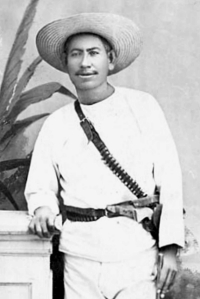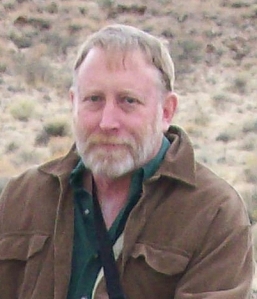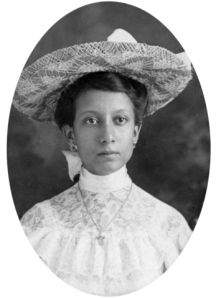Lee la versión en español abajo
When we were compiling the Indigenous Message on Water, we had the fortune via email to meet Jon M. Fox, Teguima/Yoemem poet, writer and elder, whose traditional territory is the Sonora desert in both sides of the USA/Mexico border. Jon’s ancestral family was involved in a long battle to protect the Yaqui River (Hiak Vatwe) and its surrounding lands, which the Mexican Government tried to expropriate during the period from 1874 to 1887. A history (“etehoim” or “tellings”) of the river’s state since those times is summarized by Jon in the following text:
The Yaqui people (Yoemem) have lived along the Sacred Yaqui River from time immemorial. Traditionally the Yoemem lived along the banks of the Yaqui River in small and dispersed settlements, that the Spanish called rancherías. After the Jesuit missionaries came into the region, the Yoemem moved from their widely dispersed encampments and settled in eight pueblos that then became part of Yoeme sacred geography. The pueblos are called, beginning from the region closest to the sea: Huirivis, Rahum, Potam, Belem, Vicam, Torim, Bacum, and Cocorit. All during this time, the Yaqui River continued its yearly cycles of seasonal flood and flow that made the region so fertile.
(…) After the Yoeme homeland had been occupied by the Mexican government in the late 1880s, Sonoran State Governor Rafael Izábel gave orders to begin rounding up and deporting Yoemem as slave labor to the henequen (agave) plantations in the Yucatan, and to farms in the Oaxaca. By 1890, with most of the Yoemem removed from the Yaqui River Valley, the Mexican government granted the Sonora and Sinaloa Irrigation Company, incorporated in New Jersey, land along the river with water rights, to begin the construction of canals for irrigating and growing crops. The Sonora and Sinaloa Irrigation Company soon went bankrupt, and the grant was purchased by the Richardson Construction Company of California in 1906. The Richardson Construction Company sold a 400 hectare block of land to developers from the United States and Europe, and received the exclusive right to 65 % of the Yaqui River’s water for a 99-year period.
The Richardson Construction Company was acquired by the Mexican government in 1927. In 1952, the Yaqui River’s flow was controlled by the newly-built Álvaro Obregón Dam, which eventually channeled the water into three major aqueducts to irrigate the commercial fields of the Lower Yaqui Valley. Since them, other dams have been placed on the river, further slowing and diverting the water. In the early nineties, another aqueduct was constructed to supply coastal communities with water, causing the water table in the Yaqui Valley to drop from one meter to 25 meters and withering the oak trees along the river. The most recent project under consideration is the Independence Aqueduct, which will draw 75 million cubic meters of water from the Yaqui River at a dam known as El Novillo. This is to supply water to Hermosillo, the capital of Sonora, where the population has grown 20 percent since 2000, to more than 700,000 people in 2013. The Yaqui still have rights to water and the land in the valley and have won a decision against the aqueduct after discovering documents saying that no group such as theirs existed in the area. The eventual result of the continued diversion will be that the water will disappear from the lower reaches of the Yaqui River.
Jon M. Fox (2012)
The historical clarity of this powerful testimony proposes an alternative version about the border, forced displacement, the concept of territory, and nation-states’ so-called “development” projects. Jon carries the voice of his ancestors with responsibility, and he draws attention to the politics of water from his own epistemology. In the Indigenous Message on Water, we can read about Jon on page 137:
An occasional writer of poetry and prose, Jon carries deeply in his heart the legacy and understanding of his ancestors, who came from present-day Sonora, Mexico. His position within his family, as an elder and bearer of traditional culture, is highly respected by all his relations. Jon continues to educate his relations in the Yoeme language and traditions that were nearly lost to them at the turn of the XXth century, understanding that this is important and unceasing work. This is done in order for them feel that they belong to some place, to some history, and also for them to stay connected to their heritage.
His verses are offerings for the sacred Yaqui River:
In memoriam, Great great grandfather José María Bonifacio Leiva Perez (Cajemé), Yoeme leader that led his people in protecting the Yaqui River (Hiak Vatwe) and traditional Yoemem lands from being expropriated by the Mexican government from 1874 to 1887.
 José María Bonifacio Leiva Perez – Cajemé (1887)
José María Bonifacio Leiva Perez – Cajemé (1887)
Río del Yaqui
Yaqui River, giving people life.
Your dark Waters would bring
The crops of every spring,
Now, bitterly lost through strife.
Maize, squash, and beans were rife,
While the warm summer rains,
Falling like blood from the sky’s veins,
To your bountiful Water, added life.
Concrete and steel now slow
The soul of the Yaqui,
Water flows, strange fruit grow;
Waters stolen first by the Yankee,
Grow melon, tomato, and garbanzo,
While the peaceful heart of the Yaqui
Rests in the sunlight, morose.
 María Salgado, Cajeme’s wife (1894)
María Salgado, Cajeme’s wife (1894)
ʅʅ
 Victoria Leiva, hija de Cajeme y María Salgado (1894)
Victoria Leiva, hija de Cajeme y María Salgado (1894)
Cuando estábamos compilando la antología Mensaje Indígena de Agua, tuvimos la fortuna de conocer virtualmente a Jon M. Fox, poeta, escritor y sabio Teguima/Yoemem, cuyo territorio tradicional es el desierto de Sonora de lado al lado de la frontera entre los EE.UU. y México. Jon se reconoce como heredero de una larga lucha por la tierra ancestral: su tatarabuelo, José María Bonifacio Leiva Pérez, fue un líder Yoemem que guió a su pueblo en la lucha por la protección del río Yaqui (Hiak Vatwe), el cual iba a ser expropiado por el gobierno mexicano entre 1874 y 1887. Una historia (etehoim – “narraciones”) del estado de río desde aquellos tiempos fue resumida por Jon en el siguiente texto:
La gente Yaqui (Yoemem) ha vivido a lo largo del sagrado río Yaqui desde tiempos inmemoriales. Tradicionalmente, los Yoemem vivieron a la orilla del Yaqui en asentamientos pequeños y dispersos, los cuales fueron llamados por los españoles rancherías. Después de que los misioneros jesuitas vinieran a la región, los Yoemem se desplazaron de sus amplios y dispersos campamentos para asentarse en ocho pueblos, los cuales, con el tiempo, llegaron a ser parte de su geografía sagrada. Comenzando por los más cercanos al mar, los pueblos se llaman así: Huirivis, Rahum, Potam, Belem, Vicam, Torim, Bacum y Cocorit. Durante este tiempo, el río Yaqui continuó sus ciclos anuales de temporadas de inundación y flujo, lo cual hace a la región tan fértil.
(…) Después de que la tierra madre fuera ocupada por el gobierno mexicano a finales de los 1880, el gobernador de Sonora, Rafael Izábel, dio órdenes para comenzar a deportar gente Yoemem para trabajar como esclavos en las plantaciones de henequen (agave) en el Yucatán, y en fincas de Oaxaca. En 1890, con la mayoría de los Yoemem desplazados del valle del río Yaqui, el gobierno mexicano le concedió el valle a la Compañía de Irrigación Sonora y Sinaloa, afincada en New Jersey, la cual llega al río con derechos sobre el agua para construir canales de irrigación y grandes monocultivos. En 1906, esa compañía entra en bancarrota, y los derechos son comprados por la Compañía de Construcción Richardson de California. Esta compañía vendió unas 400 hectáreas cuadradas de tierra a constructores de Estados Unidos y Europa, y recibió el derecho exclusivo al 65% del agua del río Yaqui por un periodo de 99 años.
La Compañía Construcción Richardson de California fue adquirida por el gobierno mexicano en 1927. En 1952, la corriente del río Yaqui fue controlada por la reciente construcción de la represa Álvaro Obregón, la cual canalizó el agua en tres grandes acueductos para irrigar los sembradíos comerciales del valle bajo el río. Desde entonces, otras represas han tenido lugar sobre el río, obstruyendo y diversificando su agua. A comienzos de los años 90, otro acueducto fue construido para ofrecer agua a comunidades costeras, ocasionando que el nivel del río bajara de un metro a 25 metros, marchitando los robles que crecían en su orilla. El proyecto más reciente bajo consideración es el Acueducto de la Independencia, el cual extraerá 75 millones de metros cúbicos de agua del río Yaqui para la represa conocida como El Novillo. Este es para ofrecer agua a Hermosillo, la capital de Sonora, donde la población ha crecido un 20% desde el año 2000, con más de 700.000 habitantes en el 2013. Los Yaqui todavía tienen derechos sobre el agua y la tierra en el valle, y han ganado el alegato contra el Acueducto, después de descubrir documentos en los que se afirma que no existe tal grupo Yaqui en el área. El posible resultado de este continuo desvío del Río será que el agua desaparezca.
Jon M. Fox (2012)
La claridad histórica de este testimonio propone otra versión de la frontera, los proyectos de “desarrollo” del estado-nación, el desplazamiento forzado y el concepto de territorio. Fox carga la voz de sus ancestros con responsabilidad y trae atención sobre las políticas del agua desde su propia tradición. En la página 137 del Mensaje Indígena de Agua, leemos sobre Jon M. Fox:
Poeta y escritor ocasional, Jon lleva profundamente en su corazón el legado y el entendimiento de sus ancestros, quienes migraron desde lo que es hoy Sonora (México) hasta los Estados Unidos. Su posición dentro de su familia es la de sabio y protector de la tradición. Desde allí, él continúa educando en su lengua nativa y acorde a sus costumbres Yoeme, las cuales estuvieron a punto de perderse a principios del siglo XX. Él sabe que es un trabajo en el que hay que perseverar y a través del cual toda la comunidad puede sentir que pertenece a un lugar y a una historia, y así conectarse a sus antepasados.
Sus versos son ofrenda para el sagrado río Yaqui:
En memoria del tatarabuelo José María Bonifacio Leiva Perez (Cajemé). Líder Yoeme que guió a su pueblo en la lucha por la protección del Río Yaqui (Hiak Vatwe) y de los territorios tradicionales, los cuales iban a ser expropiados por el gobierno mexicano entre 1874 y 1887.
Maria Luisa Godman (1914), abuela de Jon M. Fox, nieta de Cajeme.
Río del Yaqui
Río Yaqui, dando vida a tu pueblo.
Tus Aguas oscuras traían
Los cultivos de cada primavera.
Ahora, amargamente, perdidos por tanto conflicto.
Maíz, calabaza y frijoles en abundancia,
Mientras que las lluvias calientes de verano,
Caían como sangre de las venas del cielo,
Su mando vida al Agua copiosa.
Cemento y acero ahora ralentizan
El alma del Yaqui,
Corre el agua, crecen frutos extraños;
Aguas primero robadas por el Yankee,
Hacen crecer melón, tomate y garbanzo,
Mientras el corazón tranquilo del Yaqui
Descansa a la luz del sol, moroso.
 Mary Louise (1951), hija de Maria Luisa Godman y Norte-Americano Stephen T. Chisam, bisnieta de Cajeme, madre de Jon M. Fox
Mary Louise (1951), hija de Maria Luisa Godman y Norte-Americano Stephen T. Chisam, bisnieta de Cajeme, madre de Jon M. Fox
~~~


